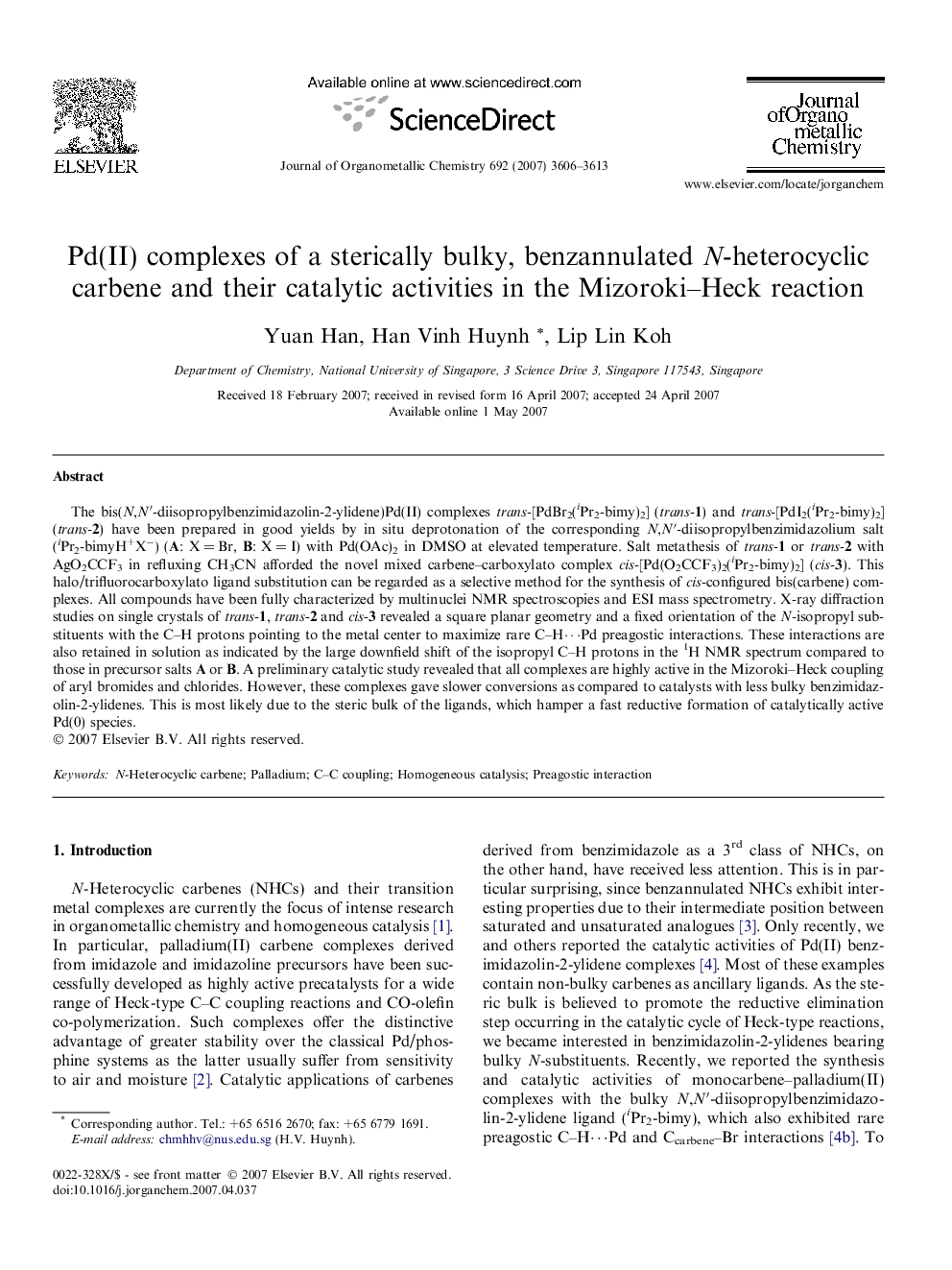| Article ID | Journal | Published Year | Pages | File Type |
|---|---|---|---|---|
| 1326513 | Journal of Organometallic Chemistry | 2007 | 8 Pages |
The bis(N,N′-diisopropylbenzimidazolin-2-ylidene)Pd(II) complexes trans-[PdBr2(iPr2-bimy)2] (trans-1) and trans-[PdI2(iPr2-bimy)2] (trans-2) have been prepared in good yields by in situ deprotonation of the corresponding N,N′-diisopropylbenzimidazolium salt (iPr2-bimyH+X−) (A: X = Br, B: X = I) with Pd(OAc)2 in DMSO at elevated temperature. Salt metathesis of trans-1 or trans-2 with AgO2CCF3 in refluxing CH3CN afforded the novel mixed carbene–carboxylato complex cis-[Pd(O2CCF3)2(iPr2-bimy)2] (cis-3). This halo/trifluorocarboxylato ligand substitution can be regarded as a selective method for the synthesis of cis-configured bis(carbene) complexes. All compounds have been fully characterized by multinuclei NMR spectroscopies and ESI mass spectrometry. X-ray diffraction studies on single crystals of trans-1, trans-2 and cis-3 revealed a square planar geometry and a fixed orientation of the N-isopropyl substituents with the C–H protons pointing to the metal center to maximize rare C–H⋯Pd preagostic interactions. These interactions are also retained in solution as indicated by the large downfield shift of the isopropyl C–H protons in the 1H NMR spectrum compared to those in precursor salts A or B. A preliminary catalytic study revealed that all complexes are highly active in the Mizoroki–Heck coupling of aryl bromides and chlorides. However, these complexes gave slower conversions as compared to catalysts with less bulky benzimidazolin-2-ylidenes. This is most likely due to the steric bulk of the ligands, which hamper a fast reductive formation of catalytically active Pd(0) species.
Graphical abstractPd(II) complexes of a sterically bulky benzimidazolin-2-ylidene ligand with unusual intramolecular C–H⋯Pd preagostic interactions (trans-1, trans-2, cis-3) have been synthesized and structurally characterized. A preliminary catalytic study revealed that the complexes are highly active in the Mizoroki–Heck coupling of aryl bromides and chlorides.Figure optionsDownload full-size imageDownload as PowerPoint slide
